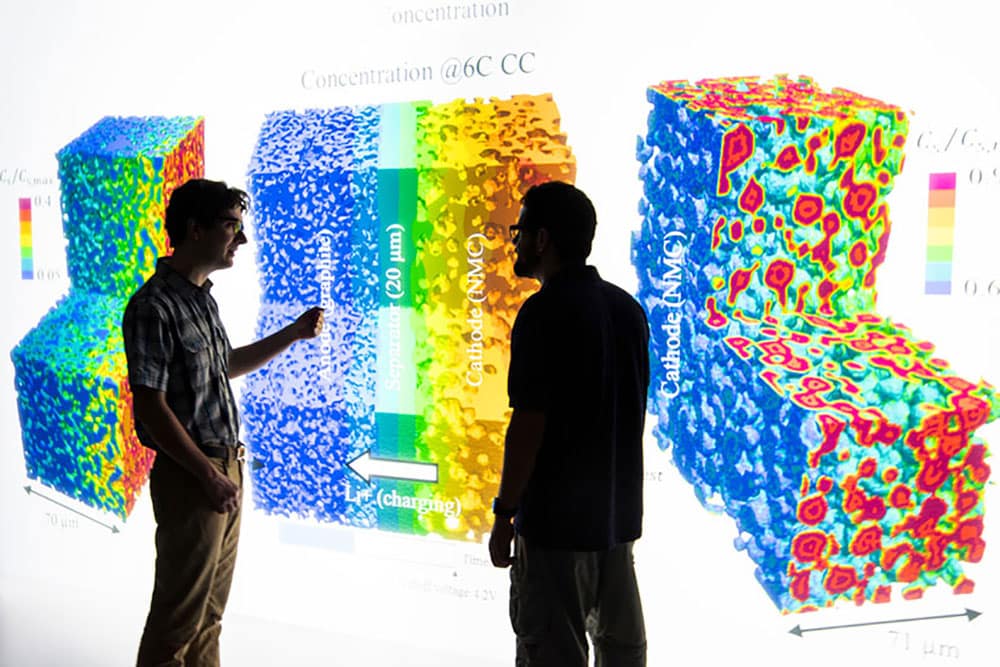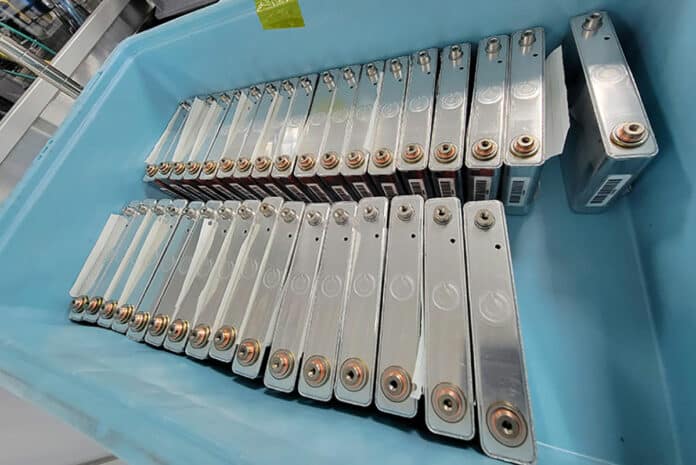The U.S. Department of Energy’s National Renewable Energy Laboratory (NREL) has developed a novel, cutting-edge battery manufacturing process that could boost the performance and efficiency of electric vehicle batteries.
The project, which stands for Battery Advanced Technology Manufacturing And Novelty (BatMan), has developed a novel laser patterning process to alter the microstructure of battery electrode materials using laser pulses. The process could result in significant improvements to electrified transportation, leading the charge toward a brighter and more sustainable future.
The project was funded by DOE’s Advanced Materials and Manufacturing Technologies Office and brought together expert minds from NREL, Clarios, Amplitude Laser Group, and Liminal Insights. The team aims to tackle the major obstacles in battery manufacturing that can have a significant impact on promoting the widespread adoption of electric vehicles by enabling them to charge faster and drive further.
“BatMan builds on NREL’s expertise using laser ablation, advanced computational models, and materials characterization to address key challenges in battery manufacturing,” said Bertrand Tremolet de Villers, project co-lead and senior scientist in NREL’s Thin Film and Manufacturing Sciences group.

“This new, high-throughput laser patterning process – demonstrated at scale with state-of-the-art roll-to-roll manufacturing techniques – uses laser pulses to quickly and precisely modify and optimize electrode structures, offering a massive leap in battery capabilities with minimal added manufacturing cost.”
The key to optimizing battery performance is in the electrodes. These are positively and negatively charged conductors that generate an electrical current through the movement of ions.
Electrodes, which are conductors with positive or negative charges, are the key to improving battery performance. They are made of thin layers of materials that can store and release ions, which carry the electric charge. Improving battery performance. They create an electric current by moving ions between them.
A battery’s energy density, voltage, and charging speed depend on the electrodes’ material, thickness, and structure. However, thicker electrodes also make it harder to charge the battery quickly without causing long-term damage from lithium plating, which reduces the battery’s lifetime.

Thicker battery electrodes also pose challenges for wetting, where the liquid electrolyte must spread and absorb evenly into the solid surface to enable ion transport, which can take a long time and cost a lot of money.
The BatMan research team has come up with an innovative solution to enhance the performance of battery electrodes. They are using lasers to create patterns on the electrode surfaces, which can improve their porosity, conductivity, and wettability. This process is not only fast and precise but also scalable and can be applied to different electrode materials.
The team has demonstrated a new laser patterning process for manufacturing electrodes on a roll-to-roll assembly line. This allows for continuous and flexible production of electrodes. The team has also tested the performance of these laser-patterned electrodes and found that they outperform conventional electrodes in terms of energy density, charging speed, and cycle life.
The BatMan project serves as a great example of how cutting-edge technology can revolutionize battery manufacturing and contribute towards a cleaner and more sustainable future. The team hopes that their laser patterning process will be widely adopted by various industries, such as EV manufacturers, grid storage, and consumer electronics.
